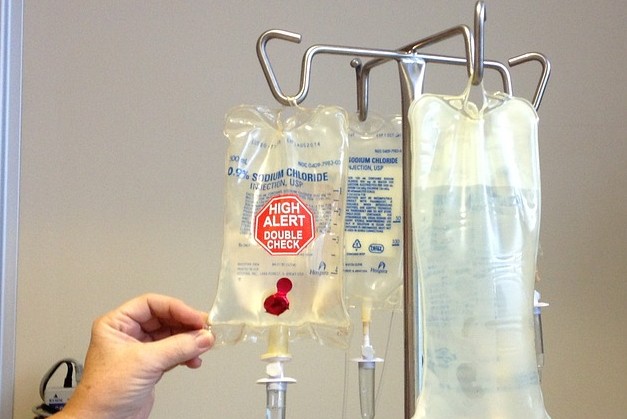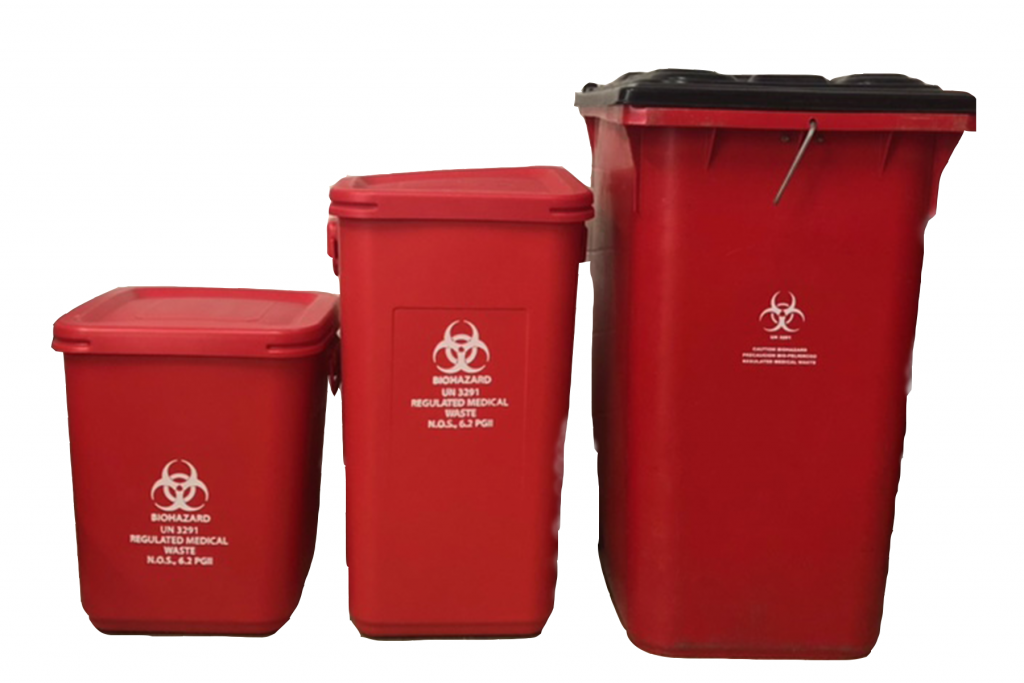Proactive Wellness Solutions: Picking the Best Medical Waste Removal Near You
Wiki Article
The Significance of Proper Clinical Garbage Disposal: A Guide for Medical Care Facilities
Correct clinical garbage disposal is an essential facet of healthcare center administration, guaranteeing the safety and security and well-being of clients, personnel, and the environment. From recognizing the different groups of clinical waste to adhering to regulatory needs, healthcare facilities need to take on effective waste segregation techniques and choose ideal disposal techniques. Nonetheless, the relevance of appropriate clinical waste disposal goes past simple conformity; it is an obligation that calls for recurring training and education and learning for staff. In this overview, we will certainly discover the different facets of medical waste disposal and highlight the vital steps that healthcare facilities ought to take. By executing these techniques, medical care facilities can minimize risks, safeguard public health and wellness, and add to a cleaner, safer atmosphere.Understanding Medical Waste Categories
Understanding medical waste classifications is crucial for proper disposal in healthcare centers. Clinical waste is a wide term that includes different kinds of waste created in medical care setups, such as labs, healthcare facilities, and centers. Classifying medical waste helps guarantee that it is dealt with, saved, and disposed of safely and in accordance with applicable regulations.There are a number of categories of clinical waste that healthcare centers require to be knowledgeable about. These categories consist of infectious waste, sharps waste, pharmaceutical waste, chemical waste, and contaminated waste (medical waste disposal services with WasteX). Each category has certain qualities and calls for various disposal methods to reduce the threat of harm to health care employees, clients, and the setting
Contagious waste, for instance, refers to squander contaminated with potentially contagious products, such as blood, body liquids, and cells. Drug waste consists of ended or unused medications, while chemical waste consists of hazardous chemicals utilized in medical procedures.
Conformity With Regulatory Needs
Health care facilities must ensure conformity with regulative requirements for proper clinical waste disposal. Regulatory bodies, such as the Environmental Protection Firm (EPA) and the Occupational Safety and Wellness Management (OSHA), have developed guidelines and guidelines to safeguard public wellness and the setting. These regulations lay out the correct handling, storage, transport, and disposal of medical waste.Conformity with regulative needs is crucial for medical care centers to avoid lawful charges, reputational damage, and possible harm to human wellness and the environment. Failing to comply with these guidelines can result in penalties, suits, and also the suspension or revocation of operating licenses.
To make certain compliance, medical care facilities need to establish detailed waste administration programs that include personnel training, correct waste segregation, and the usage of proper containers and tags. Regular audits and examinations must additionally be conducted to determine any kind of non-compliance problems and resolve them without delay.
It is essential for health care facilities to remain up to day with changes in guidelines and update their waste management techniques accordingly. This can be accomplished by actively checking updates from regulatory bodies and taking part in training programs and workshops.
Carrying Out Efficient Waste Segregation Practices
To ensure proper medical waste disposal, health care centers must carry out effective waste segregation practices. Waste segregation is a vital action in the total waste monitoring process, as it aids decrease the threat of infection, stops cross-contamination, and makes sure the secure disposal of different sorts of waste. Reliable waste segregation practices involve separating clinical waste into different classifications based upon its features and possible threats.One typical method is the segregation of sharps waste, such as needles and scalpels, from various other sorts of medical waste. Sharps waste should be positioned in puncture-resistant containers to avoid injuries and possible infections. In addition, harmful waste, such as chemicals and pharmaceuticals, ought to be separated from basic medical waste to stop environmental contamination.
Correct labeling and color-coding of waste containers are crucial for reliable waste partition. Clear and visible labels ought to be put on each container to show the kind of waste it contains and any helpful resources kind of special handling needs - medical waste disposal services with WasteX. In addition, color-coding can be utilized to set apart between various waste groups, making it simpler for health care team to get rid of and determine of waste correctly
Regular training and education for medical care team is essential for the successful application of waste partition methods. Staff members ought to be informed on the various waste groups, correct segregation strategies, and the importance of complying with waste administration protocols. This will assist make sure conformity and uniformity in waste segregation methods throughout the facility.
Picking Appropriate Disposal Techniques
Correct option of suitable disposal techniques is crucial in ensuring the risk-free and environmentally responsible monitoring of clinical waste in health care centers. Medical care centers produce a variety of medical waste, including sharps, infectious waste, pharmaceutical waste, and chemical waste - medical waste removal. Each kind of waste requires details disposal approaches to lessen the danger of contamination, injury, and ecological damageOne typical disposal technique for clinical waste is incineration. Incineration includes the controlled burning of waste at high temperatures.

Chemical sanitation is an additional approach used for sure kinds of medical waste, such as pharmaceutical waste. This approach utilizes chemicals to counteract or destroy pollutants. It is important to pick chemicals that are secure and eco friendly.
In some situations, landfill disposal might appropriate for non-hazardous medical waste (medical waste disposal services with WasteX). Nonetheless, correct partition and product packaging are important to stop leak or contamination.
Eventually, healthcare facilities have to thoroughly examine the qualities of their medical waste and select ideal disposal approaches that prioritize safety and security, environmental management, and governing compliance. Regular training and surveillance are necessary to guarantee that healthcare personnel complies with proper disposal methods.

Training and Educating Staff on Correct Disposal Procedures
Personnel education and training play a crucial duty in guaranteeing the appropriate disposal of medical waste in medical care facilities. It is crucial that all employee, consisting of doctors, nurses, service technicians, and support personnel, receive extensive training on proper disposal treatments. This training ought to cover the various sorts of clinical waste, their possible hazards, and the proper methods her latest blog for taking care of, segregating, and disposing of them.One of the key goals of team education and training is to guarantee that all medical care experts recognize the importance of appropriate disposal procedures and the potential repercussions of incorrect waste monitoring. They need to be knowledgeable about the risks connected with clinical waste, such as the transmission of infections and the contamination of the environment. medical waste removal service. By comprehending these threats, team participants will be much more inspired to adhere to appropriate disposal methods and take the necessary precautions to safeguard themselves, their coworkers, and the area
Educating need to likewise cover using individual safety equipment (PPE) and the appropriate strategies for taking care of clinical waste. Team member ought to be informed on exactly how to determine and set apart various kinds of waste, such as sharps, transmittable waste, and unsafe chemicals. They should also be educated on the proper use waste containers, such as sharps containers and biohazard bags, as well as the significance of labeling and sealing these containers appropriately.
Furthermore, personnel education and learning and training must include normal updates and correspondence course to make sure that health care professionals stay notified concerning the most recent laws and ideal techniques in clinical waste disposal. This ongoing education is crucial to keep a high degree of understanding and compliance among personnel.
Verdict
To conclude, proper medical garbage disposal is of utmost significance for medical care facilities. Understanding the different categories of clinical waste and following regulative requirements ensures the safety and security and health of both medical care workers and the basic public. Carrying out effective waste partition techniques and selecting suitable disposal methods are important in preventing the spread of transmittable diseases and safeguarding the environment. Training and educating personnel on proper disposal procedures is crucial for preserving a safe and tidy health care center.From recognizing the Learn More different groups of medical waste to abiding with regulative needs, health care centers have to embrace reliable waste segregation techniques and pick suitable disposal approaches. These categories include contagious waste, sharps waste, pharmaceutical waste, chemical waste, and radioactive waste.To make sure correct medical waste disposal, health care centers must execute reliable waste segregation techniques. Waste segregation is an important action in the overall waste monitoring process, as it helps lessen the risk of infection, prevents cross-contamination, and makes sure the secure disposal of various types of waste. Medical care centers generate a variety of clinical waste, including sharps, infectious waste, pharmaceutical waste, and chemical waste.
Report this wiki page